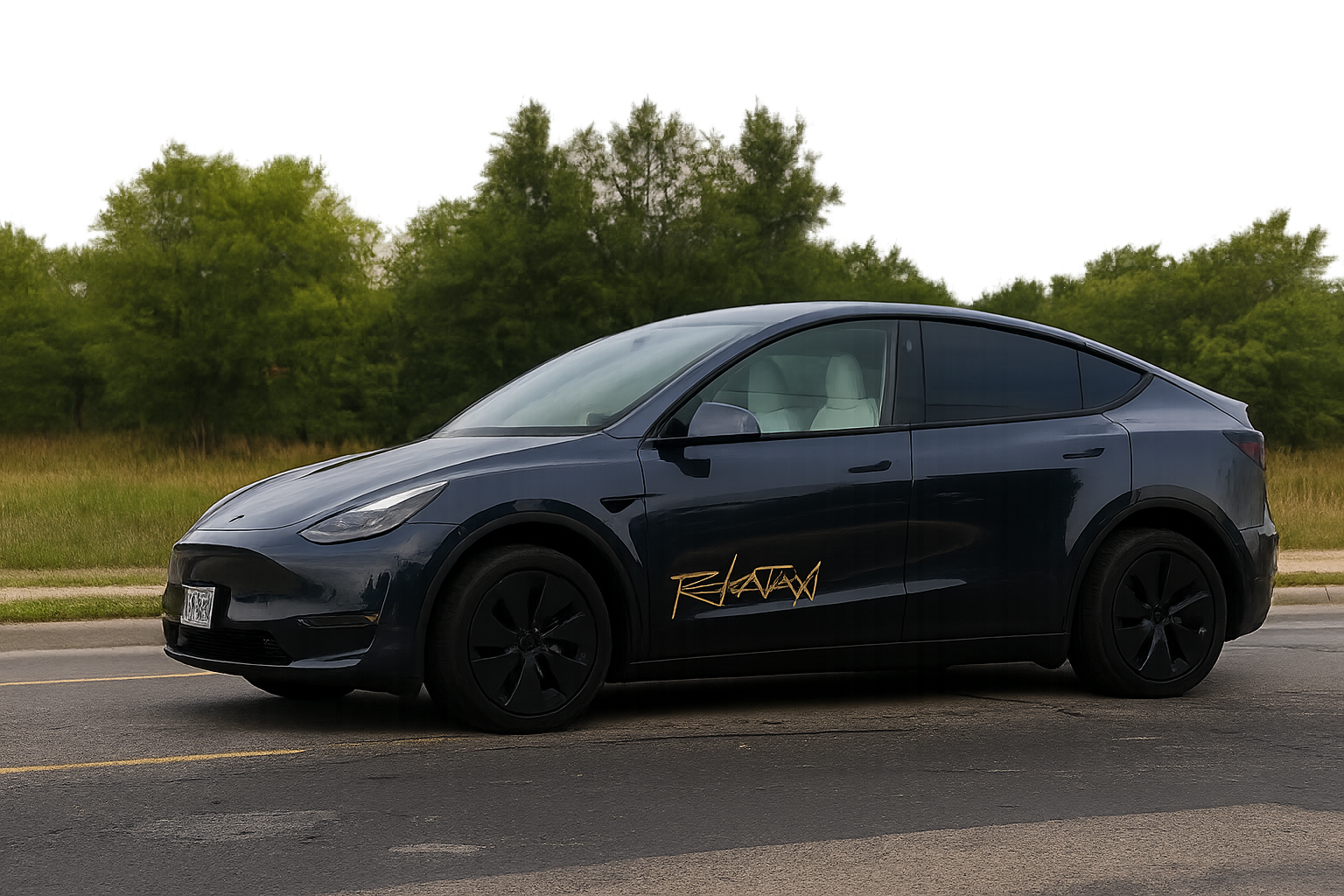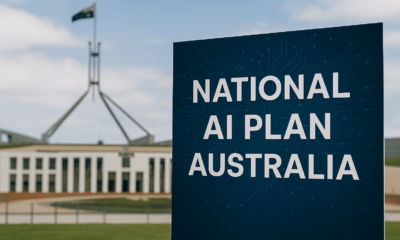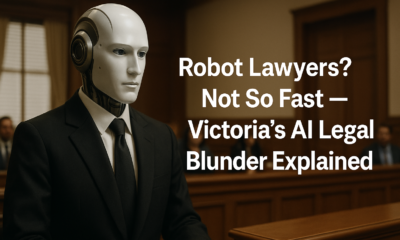Tech & Innovation
Robotaxis: The Autonomous Revolution Poised to Redefine Ride‑Hailing
The emergence of robotaxis—fully autonomous vehicles for passenger transport—is reshaping the mobility landscape. With active trials in cities like Austin, Phoenix, San Francisco, and several Chinese hubs, driverless taxis promise a future of smoother, safer, and more affordable rides. These advances mark a critical inflection point for the ride-hailing industry, raising key questions about the future of traditional players like Uber, Lyft, and local taxi services.
1. What Are Robotaxis?
“Robotaxi” refers to Level 4 or Level 5 autonomous vehicles—capable of transporting passengers without human intervention. These vehicles use AI-driven software combined with an array of sensors such as LiDAR, radar, and cameras to safely navigate complex urban environments.
Robotaxis are not just technological novelties—they represent a long-term shift in transportation economics. As hardware and software costs drop, fully autonomous taxis are becoming increasingly viable. Recent market research estimates the global robotaxi industry at USD 4.2 billion in 2025, with forecasts reaching over USD 135 billion by 2032, reflecting expected compound annual growth between 64–71%
2. Industry Leaders Driving the Shift
Waymo (Alphabet)
- Cities: Phoenix, San Francisco, Los Angeles, Miami, Austin, and Silicon Valley.
- Performance: 250,000+ paid rides weekly, over 1 million miles per week.
- Safety: Recent reports show zero bodily injury liability over 3.8 million autonomous miles.
Tesla
- Launch: Initiated a robotaxi service in Austin in June 2025 using Model Y vehicles with safety monitors onboard.
- Tech: Relies on a vision-only system (no LiDAR or radar).
- Future Plans: Developing the “Cybercab”—a dedicated driverless EV without pedals or a steering wheel, expected by 2026.
Cruise (General Motors)
- Scope: Formerly operated in San Francisco, Phoenix, and Austin before suspending all driverless services in late 2023 following a high-profile safety incident.
- Status: As of 2025, Cruise has halted its robotaxi operations entirely. General Motors has ceased funding the program, shifting focus to driver-assist technologies, effectively removing Cruise from the autonomous ride-hailing race.
Baidu Apollo (China)
- Scale: Operating robotaxi services in over 10 Chinese cities.
- Efficiency: Vehicles priced under $30,000, enabled by local manufacturing scale.
WeRide and Pony.ai
- Global Reach: Operating in China, Europe, the U.S., and the Middle East.
- Partnerships: Integrating into Uber’s platform in select regions.
3. Uber’s Strategy in the Autonomous Age
Uber initially developed its own autonomous division—Advanced Technologies Group—but sold it in 2020 to focus on a partnership-driven model. Rather than operating its own robotaxi fleets, Uber is integrating services from companies like:
- Waymo: In Phoenix, Waymo rides can be booked directly through Uber.
- Momenta: Targeting European markets starting in 2026.
- May Mobility: Partnered in the U.S. for autonomous vehicle rides.
- WeRide and Pony.ai: Recently inked global integration deals.
Uber’s platform approach allows it to capitalize on its massive user base without the capital expense of owning and maintaining fleets.
4. Tesla’s Pilot in Austin—and Its Global Ambitions
Tesla’s launch of its robotaxi service in Austin in June 2025 marks a notable step forward in autonomous mobility. The initial rollout involves standard Model Y vehicles equipped with Full Self-Driving (FSD) software, still accompanied by human safety monitors. Operating within a tightly geofenced area, the service offers flat fares starting at $4.20. Although limited in scope, this pilot reflects Tesla’s broader ambition to disrupt the ride-hailing sector at scale.
Unlike traditional robotaxi efforts that depend on costly LiDAR systems and custom-built fleets, Tesla is pursuing a vision-only approach using AI neural nets and camera arrays. This choice, while controversial, dramatically reduces hardware costs and simplifies production.
While its Austin launch is modest in scope, Tesla’s broader strategy could redefine the competitive landscape entirely.
🚀 Tesla’s Unique Advantage: Path to Becoming a Robotaxi Behemoth
Tesla holds a singular advantage in the race to dominate autonomous ride-hailing: its unmatched hardware footprint and vertically integrated ecosystem. Unlike competitors building dedicated robotaxi fleets from scratch, Tesla can potentially convert millions of existing customer-owned vehicles into autonomous ride-hailing units through over-the-air software updates. This fleet-on-demand approach allows Tesla to scale at a pace no rival can match. Additionally, its in-house AI chip development, massive real-world driving dataset, and unified software-hardware stack give it end-to-end control—translating to faster iteration, lower costs, and consistent performance. If Tesla’s Full Self-Driving (FSD) reaches true autonomy, it could swiftly deploy the largest robotaxi network globally, shifting it from a carmaker to a mobility platform titan—potentially outpacing both Uber and Waymo in reach and revenue.
5. The Disruption Equation
Cost Efficiency
Without a driver, robotaxi services like Waymo operate at costs as low as $0.30 per mile. Compare this to traditional ride-hailing, which typically exceeds $1 per mile. This creates pricing power and potential for high-volume adoption.
Fleet Operations vs. Platforms
Tesla and Waymo are betting on owning and operating their fleets, controlling both hardware and service delivery. Uber and Lyft prefer to remain platform aggregators—connecting users with third-party operators. Each model has its pros and cons:
- Fleet operators control margins but face high upfront costs.
- Aggregators scale quickly but risk margin compression and dependency on partners.
Safety and Trust
Waymo’s data shows robotaxis are safer than human-driven rides in many settings. But Tesla, with its camera-only vision system, still faces scrutiny from regulators. Public perception will be a key determinant of growth.
Regulatory Complexity
Local governments remain cautious. While Texas is embracing AVs, other states like California demand rigorous licensing and compliance frameworks. Global rollouts will require localized strategies, making regulation a bottleneck.
6. Market Impact: Winners and Losers
| Player | Strategy | Advantages | Challenges |
|---|---|---|---|
| Waymo | Owns fleet | Safety, scale, operational data | High capex, regulation |
| Tesla | Hybrid: own + user fleet | Mass production, vision AI | Trust, no LiDAR, safety |
| Cruise | Suspended operations | Early leader, GM backing (past) | Program shut down, regulatory fallout |
| Baidu Apollo | Mass low-cost rollout | Cost leadership | Limited to China |
| Uber | Aggregator | User base, geographic reach | Thin margins, dependency |
7. What Lies Ahead
As 2025 progresses, robotaxis are expanding from niche demos to real-world deployment. By 2030, the following trends are likely to materialize:
- Mass Adoption: Fleet sizes in thousands across U.S., China, and EU cities.
- Price Wars: Competition could drive fares down, increasing user adoption.
- Mixed Models: Human drivers will coexist with AVs in most cities, especially during transition periods.
- New Platforms: More companies may follow Tesla and Waymo in launching their own ride-hailing apps.
- Insurance and Safety Ecosystems: New legal frameworks and insurance products will emerge for AV-specific risks.
8. Conclusion
Robotaxis are not just an evolution of the ride-hailing model—they are a disruption. By slashing costs, improving safety, and automating logistics, they threaten the current service model reliant on millions of human drivers. Companies like Waymo, Tesla, and Baidu are leading this transformation, while others like Cruise have exited the race entirely due to safety, financial, and regulatory setbacks.
Among the contenders, Tesla stands out with a potentially game-changing model. Its ability to convert its massive installed base of vehicles into autonomous assets via software updates could enable it to leapfrog fleet-dependent rivals and dominate the space. If successful, Tesla won’t just be competing with Uber or Waymo—it could become the default infrastructure for global autonomous mobility.
The road to autonomy remains complex, shaped by evolving regulations, public trust, and technological maturity. But one thing is clear: the transport revolution is well underway. As robotaxis move from pilots to mainstream adoption, the companies that adapt fastest—and scale smartest—will define the future of how the world moves.
Hi, I’m Ankush. Based in Port Lincoln, South Australia, I hold a Bachelor of Science and a Bachelor of Education (Middle & Secondary) from the University of South Australia, graduating in 2008. With several years of experience as a high school and secondary teacher, I’ve combined my passion for technology and finance to drive innovation in the on-demand service industry. As the founder of Orderoo, I’m committed to leveraging technology to simplify everyday tasks and enhance accessibility to essential services across Australia. My focus remains on exploring new opportunities to expand and improve these solutions, ensuring they meet the evolving needs of users and service providers alike.





































You must be logged in to post a comment Login